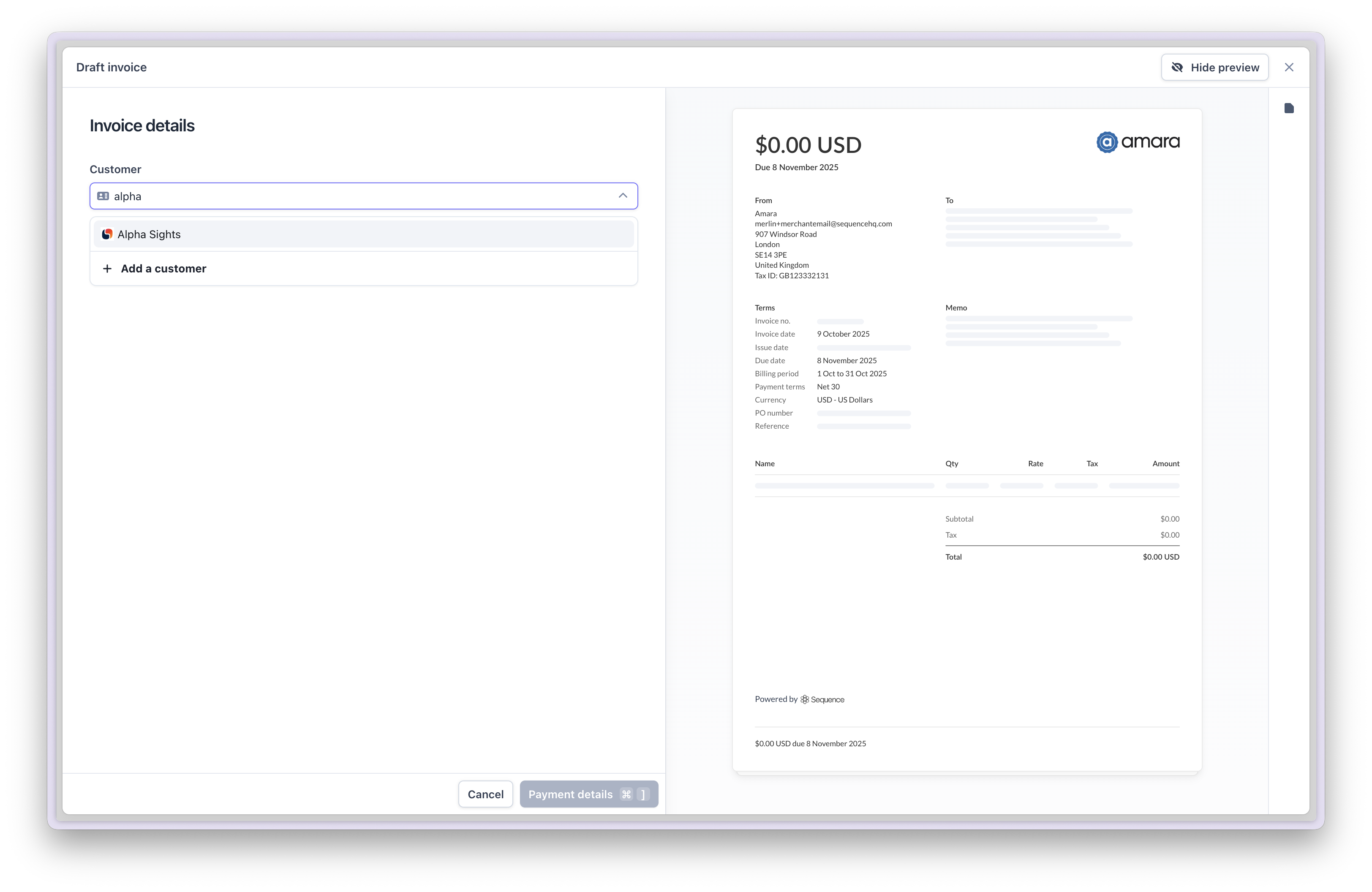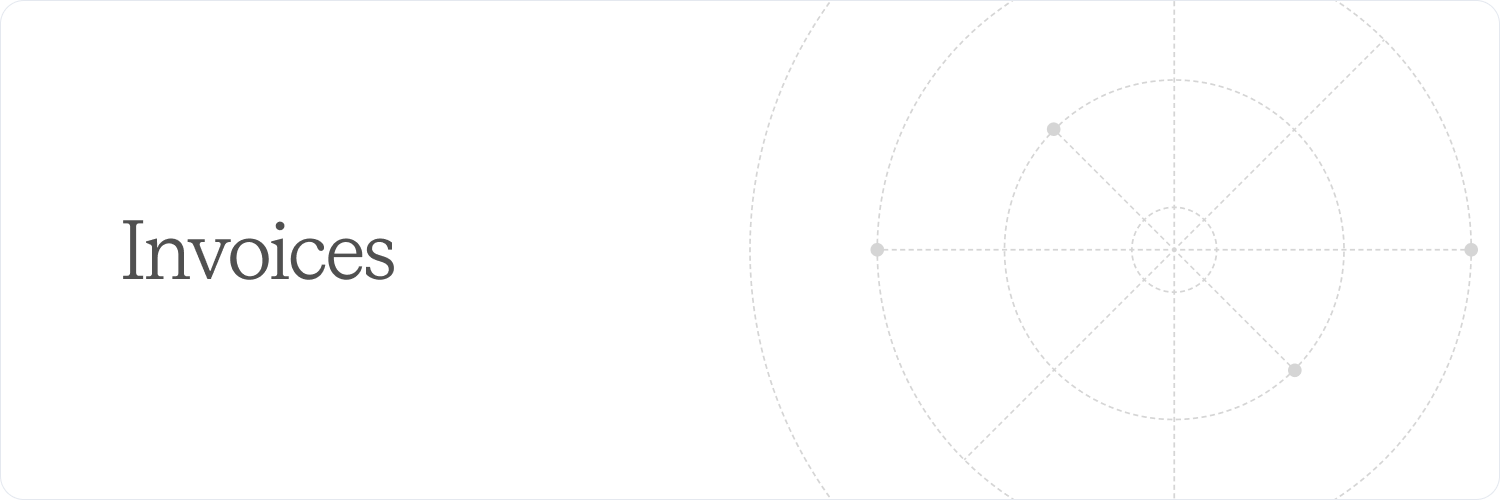
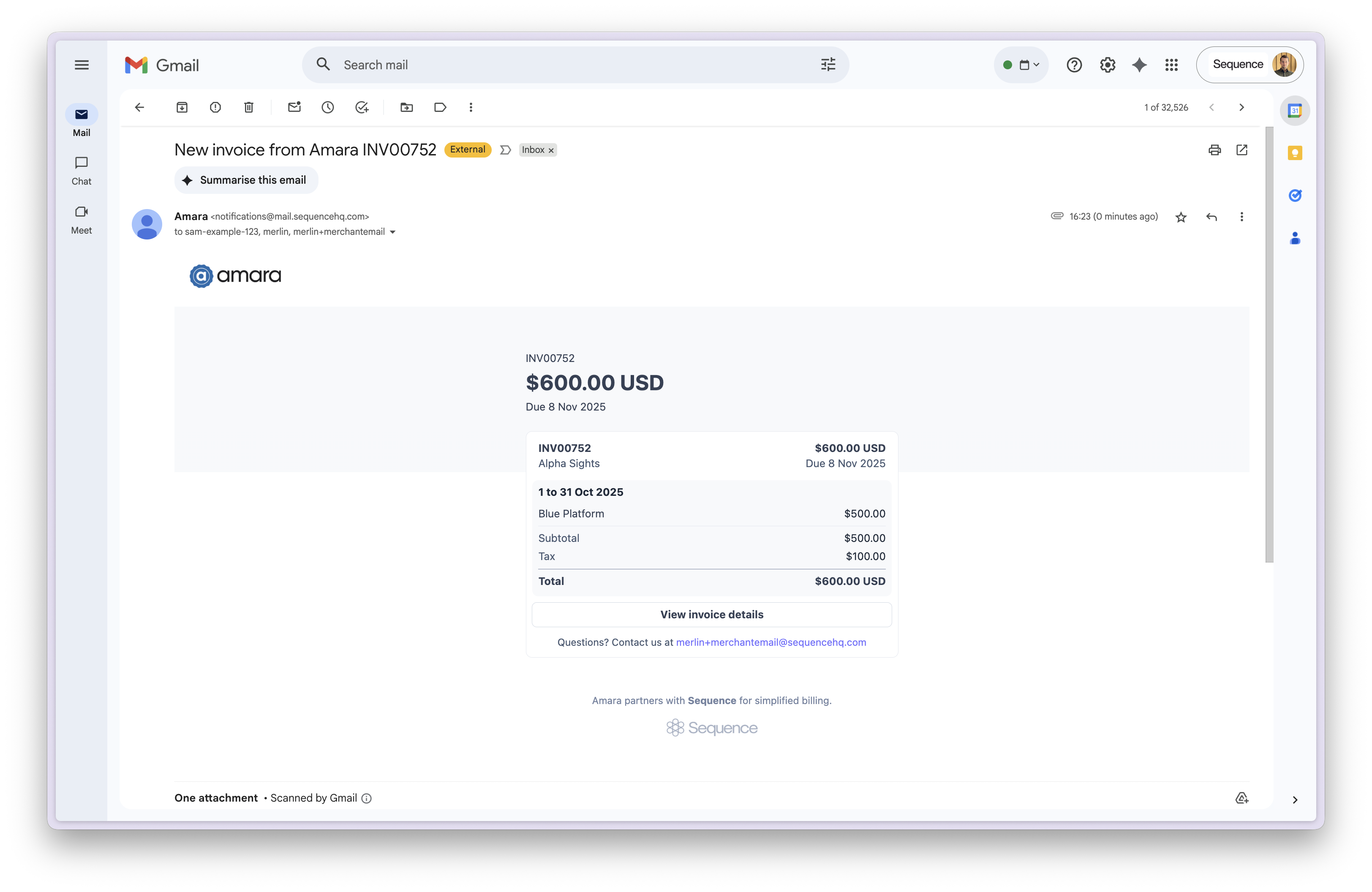
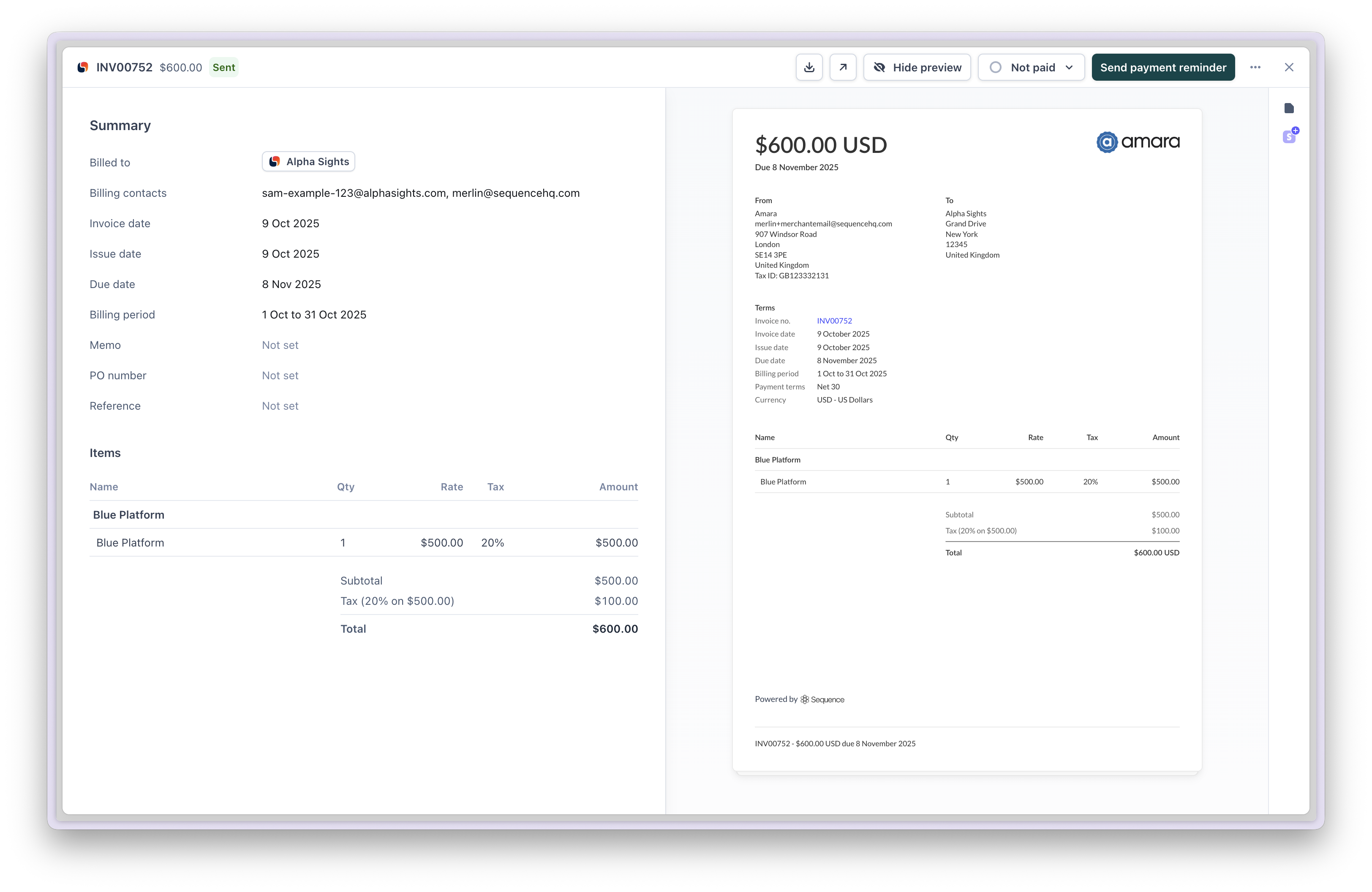
Managing invoices
Sequence supports multiple states to capture the lifecycle of an invoice, from initial creation to marking an invoice as paid. By default, new invoices are created as drafts. You can edit any part of a draft invoice, including line items and recipient information.Invoices have the following status: In-progress, Draft, Final, Sent, Void
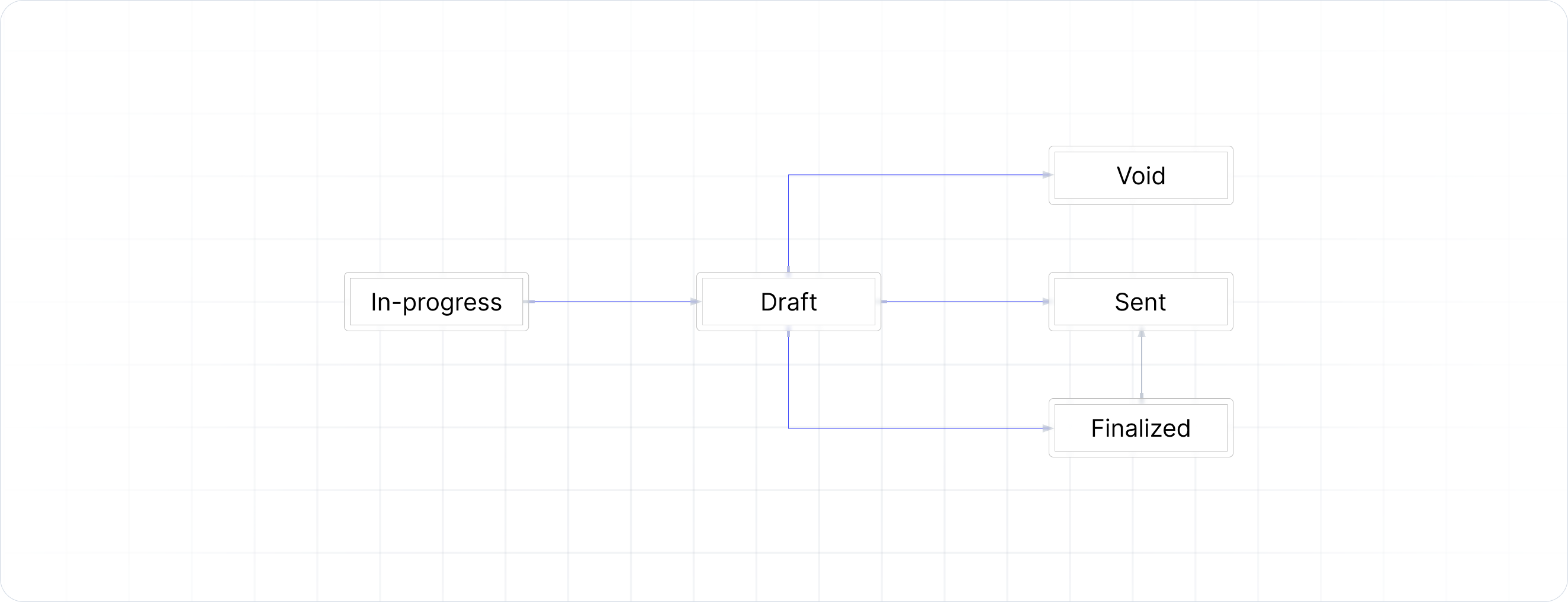
IN PROGRESS
IN PROGRESS
In-progress invoices cannot be edited and will turn to
Draft at the end of the billing period. Recalculate in-progress invoices to update its total based on latest usage.DRAFT
DRAFT
Draft invoices can still be edited and updated.
FINAL
FINAL
Finalized invoices can no longer be edited. Finalized invoices will be synced with your Accounting system if you have an integration set up. Finalize invoices if you prefer to send invoices from your ERP or Accounting system.
SENT
SENT
Sent invoices have been finalized and sent to your customer’s billing contacts. Once sent, Sequence will update the sent and due date of the invoice as well as the status in your Accounting system to ‘Issued’ or ‘Sent’ (depending on which Accounting system you use). Equally, if you choose to issue the invoice via your Accounting system, the status will be updated to ‘Sent’ in Sequence. You can also mark an invoice as sent without triggering integration syncs (to ERP, for payment collection, etc). This is especially useful when backfilling historical invoices or when invoices are delivered via the customer portal (for example).
VOIDED
VOIDED
Indicates the invoice was voided and no payment is now expected on this invoice. Voiding is likely to be used where an invoice has had inaccuracies, as editing sent invoices is not permissible in most tax jurisdictions. Use void if you have raised a sales invoice in error and want to remove it from revenue, accounts receivable etc. Sent invoices can be voided if their payment status is unpaid. For audit purposes the voided invoice will still be listed in invoices.
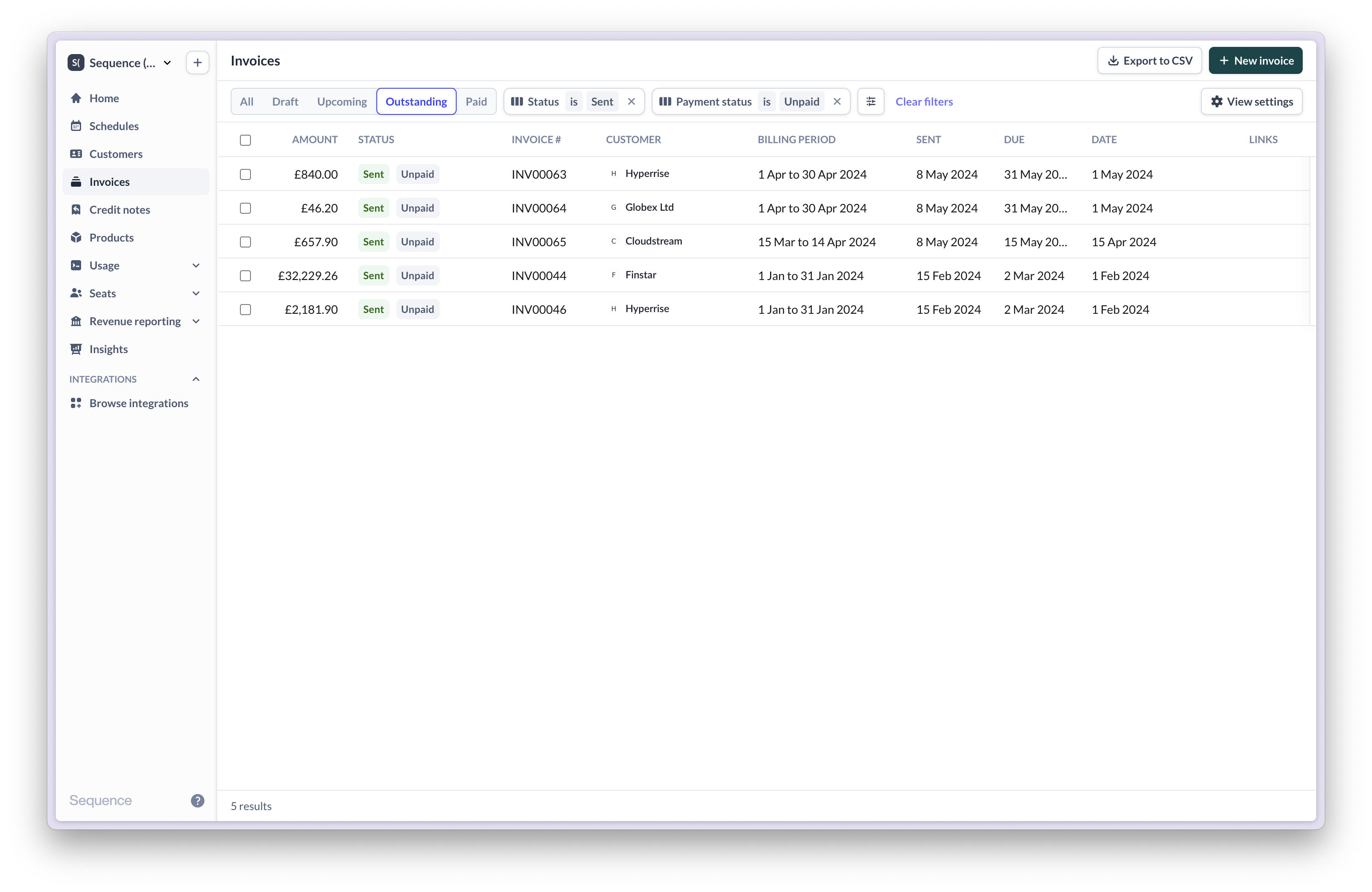
Sending invoices to customers
Provide customers a delightful billing experience and send branded invoices from Sequence. Send invoices individually, via a bulk workflow or fully automatically. When you send an invoice through Sequence, your merchant email address will be included in CC.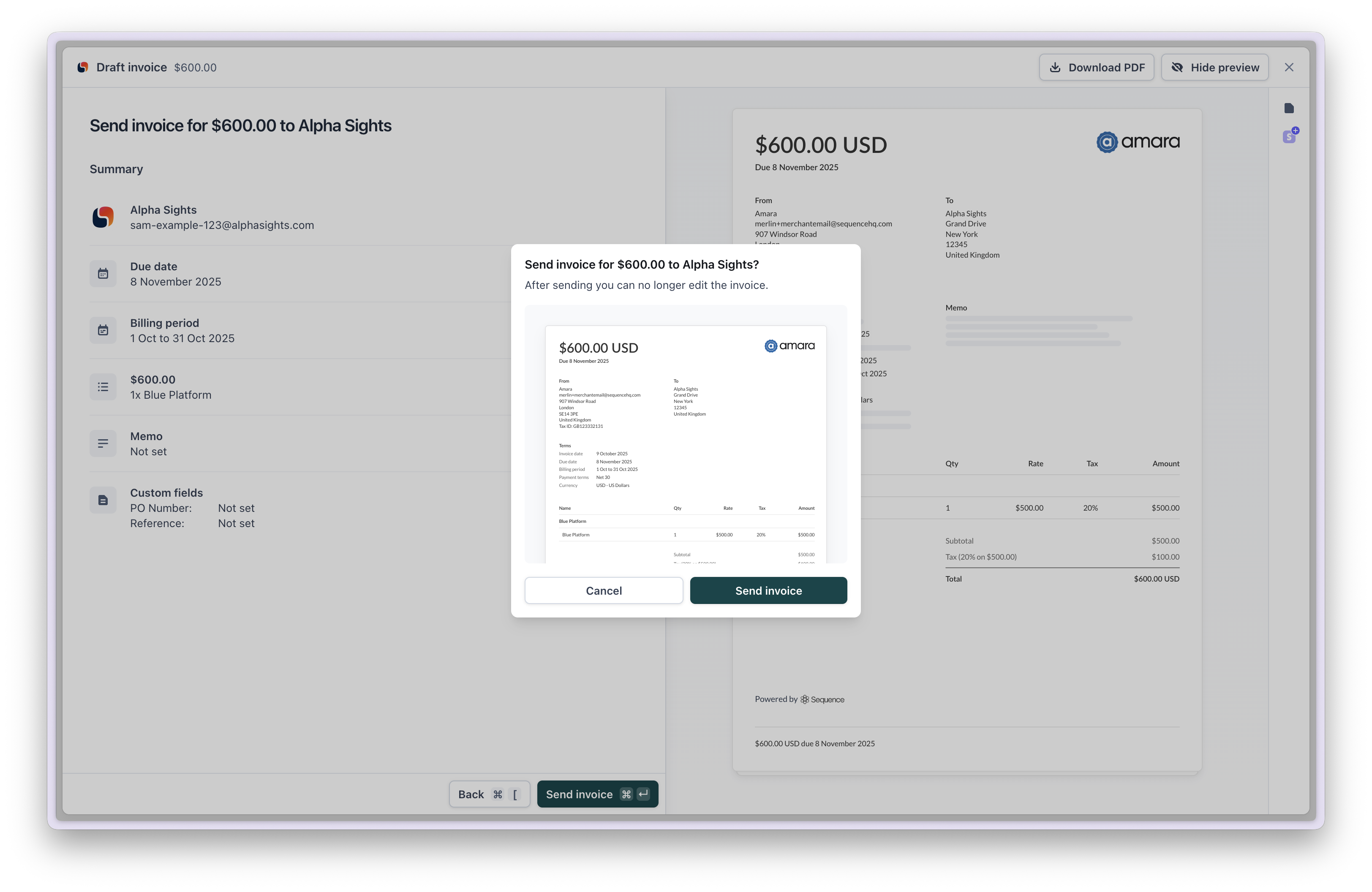

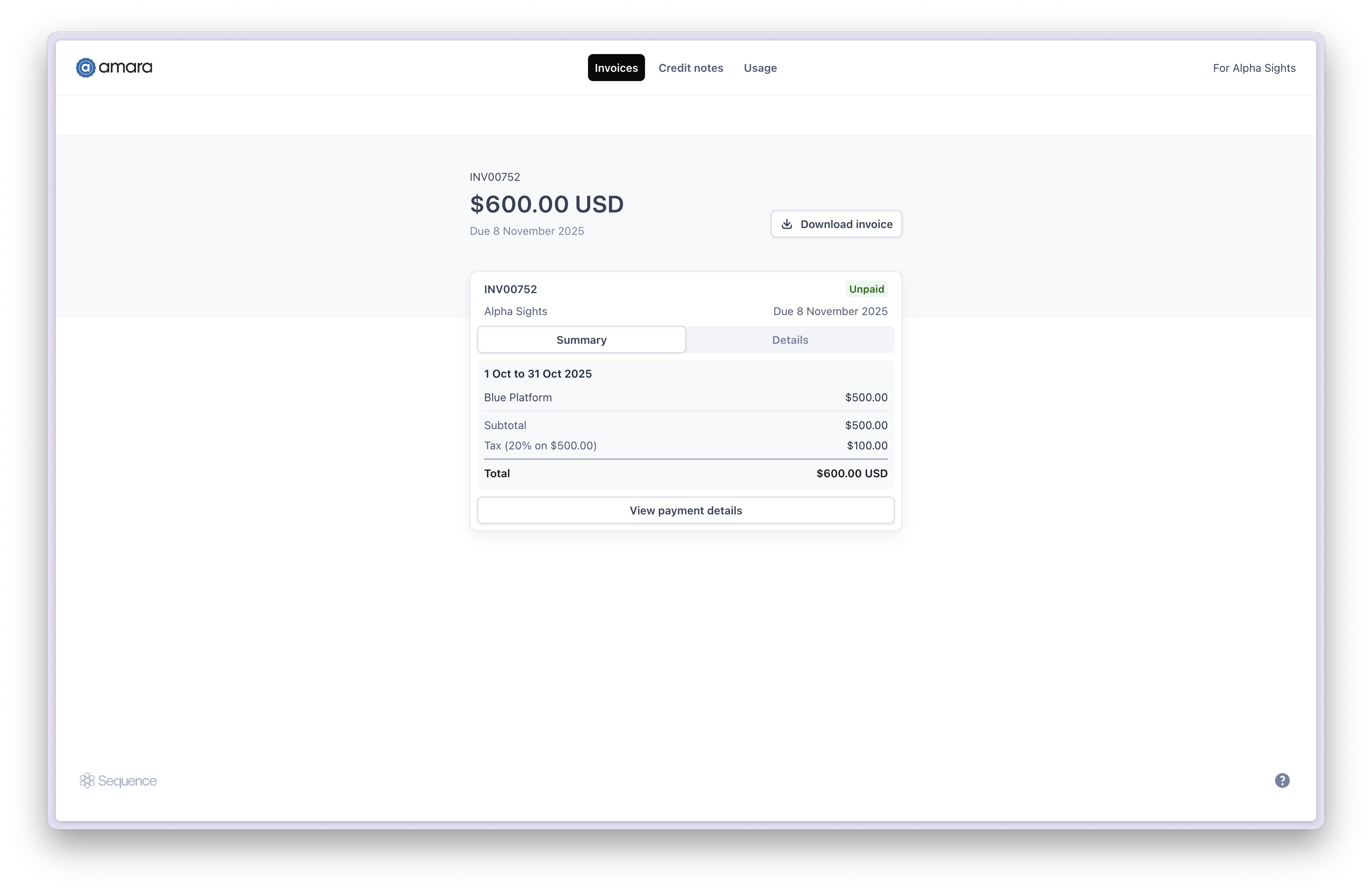
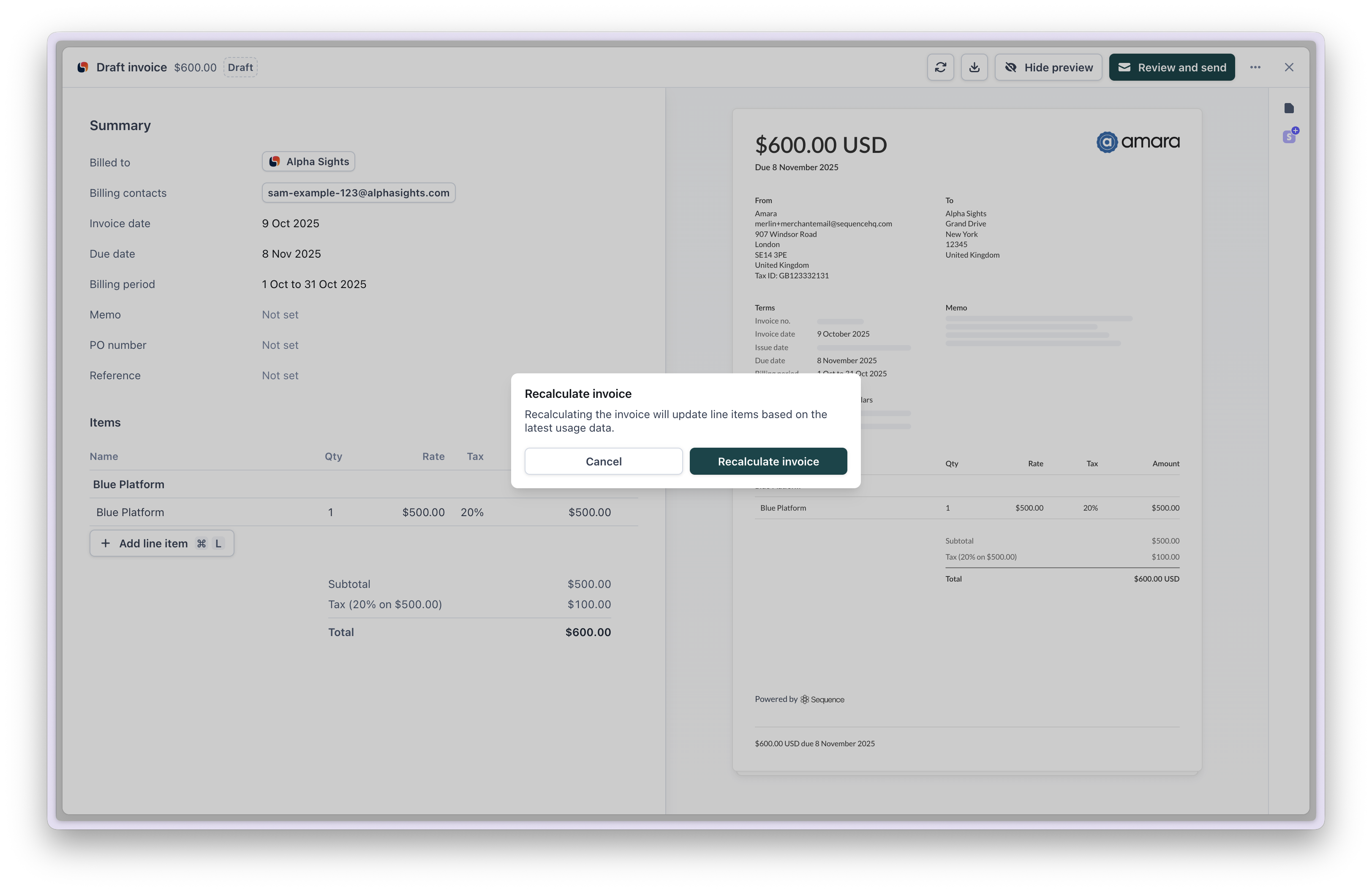
Editing invoices
Sequence is designed for financial operators and provides a flexible editor to make any adjustments to draft invoices. Rename, change rates and quantities or add/remove line items from invoices. Invoice adjustments:- Edit existing line items (Name, Rate, quantity, tax rate)
- Add new line item groups and line items
- Remove line items
- Apply Invoice Discounts
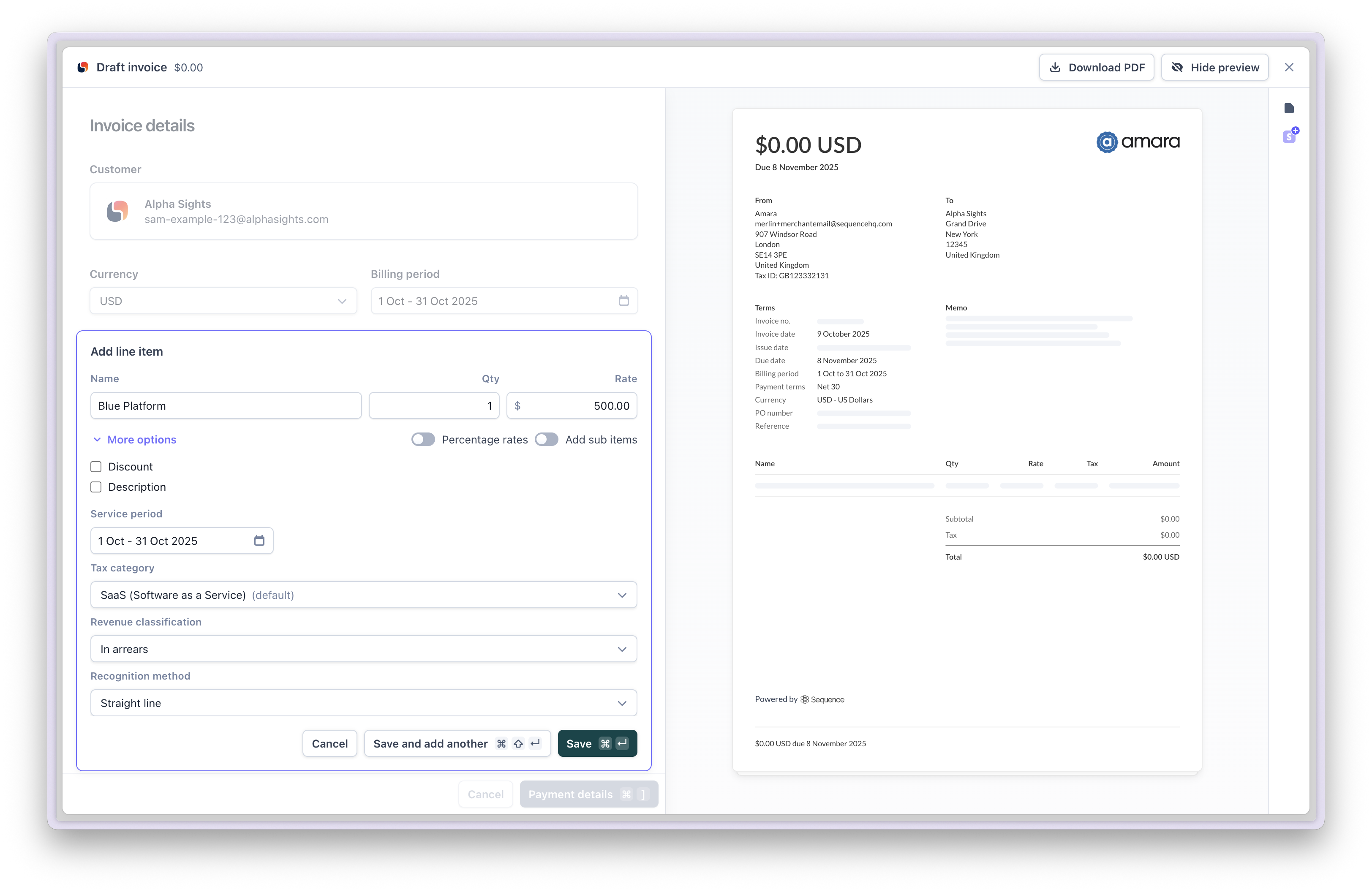
Duplicate invoices
Duplicate existing invoices to quickly create new invoices with the same line items, customer details, and settings. Access the duplicate function from the invoice detail view or directly from the invoices table. When you duplicate an invoice:- All line items, pricing, and tax settings copy to the new invoice
- The new invoice is created as a draft
- You can modify any details before finalizing
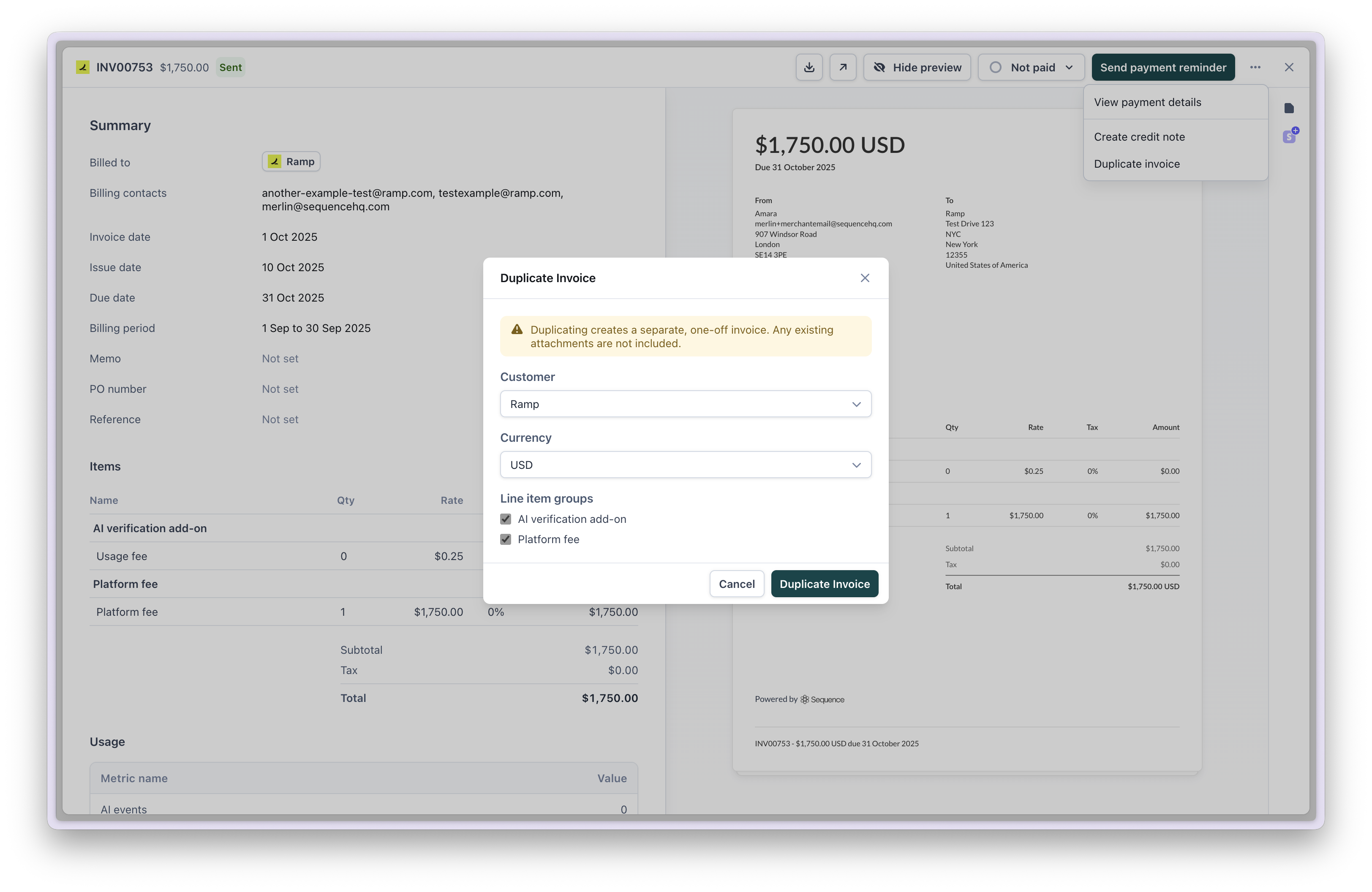
In-progress invoices
With Sequence, you can track upcoming invoices ahead of time with in-progress invoices. While an invoice is in-progress, you can recalculate it to account for new usage data. You can also see a preview of the line items and the invoice PDF. In-progress invoices cannot be edited. Once the invoice date is reached, the invoice will change its status from in-progress to draft, at which point you can make changes or send the invoice to your customer.Payment status
Once an invoice has been finalized, you can update its payment status to one of the following options.UNPAID
UNPAID
Default status for finalized invoices.
PAID
PAID
Mark invoices as paid if full payment has been received.
UNCOLLECTIBLE
UNCOLLECTIBLE
Mark invoices as uncollectible to keep track of bad debt that can be written off.
PARTIALLY PAID
PARTIALLY PAID
Mark invoices as partially paid if a partial amount has been paid.
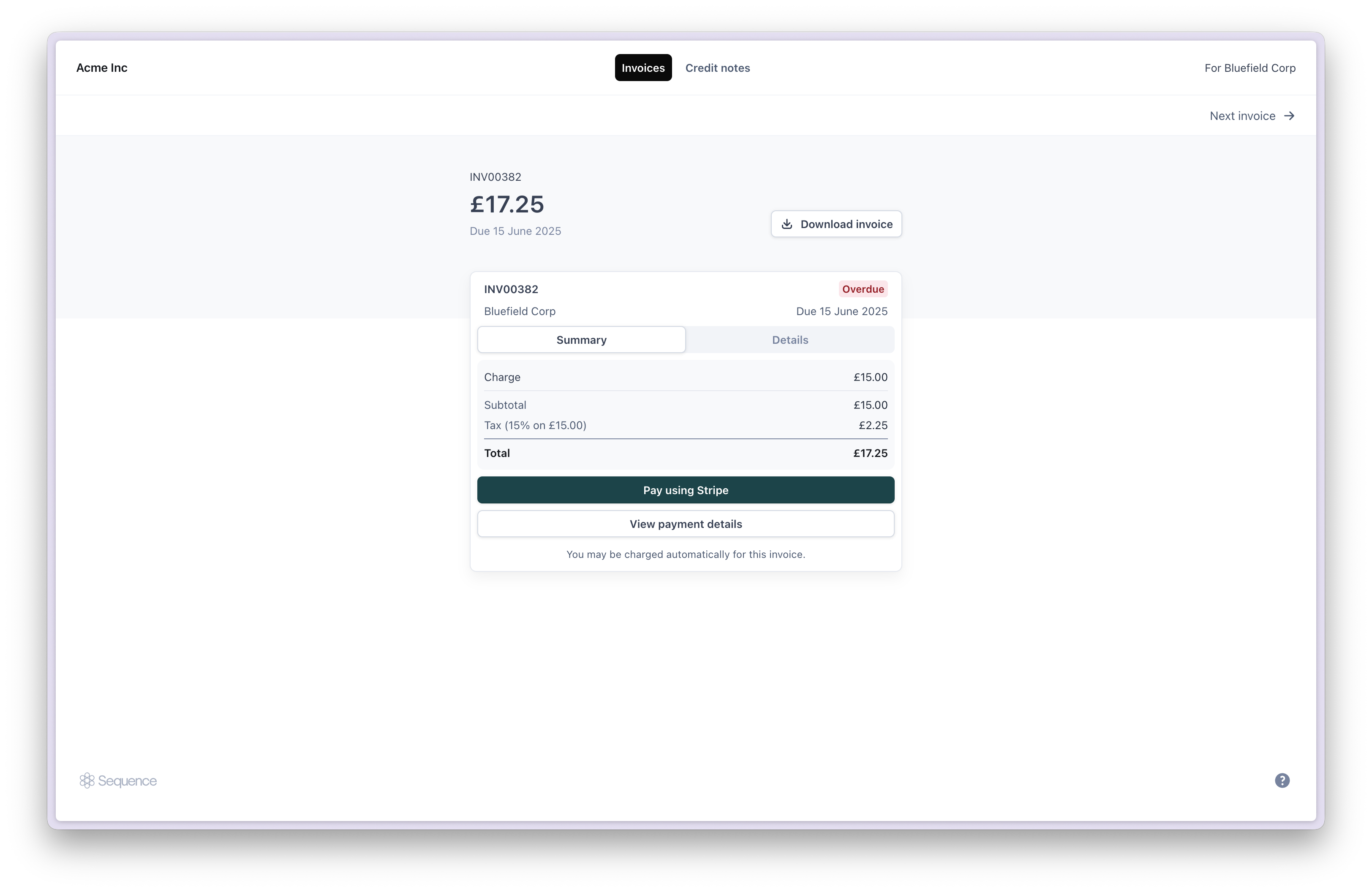
- Sequence billing schedules creating draft invoices at month-end
- Billing operator reviews and finalizes open invoices
- Billing operator issues invoices to the customer
- Payment is received
- Invoices are marked as paid
Recalculating invoices
Recalculating Invoices reduces the time spent on manual invoice updates, and makes it easier to test invoices in your sandbox environment. Recalculate an invoice to update usage-based line items with new data. To recalculate an invoice, click the ‘recalculate’ option above the invoice preview.Recalculating an invoice will regenerate the invoice using Sequence Billing Engine. Any manual changes made to the invoice will be discarded.

Invoice numbering
Invoice numbers are generated when invoices or credit notes are finalized or voided.
SEQ and SCN. You can change the prefix in settings. We recommend using a separate numbering sequence to avoid any clashes with your Accounting suite or ERP. To adjust your starting number, reach out to the team. An invoice or credit note will be assigned a number when it is finalized or voided.
If you would rather specify the number each time you finalize/void an invoice or credit note then this is an option that can be set on your account. You will then be prompted to enter the number when you finalize or void an invoice/credit note. This can be useful if you are generating invoices in multiple systems and want to avoid duplicate numbers. An easier alternative is to use a different prefix in different systems. This way you can still benefit from Sequence’s automatic numbering without risk of duplication.
Invoice dates
This setting allows you to adjust Sequence invoice dates to match your current receivables and accounting process. Sequence supports three different accounting date settings for invoices.- Billing date (recommended): This will set the invoice date ‘Billing date’ to the day after the billing period. For example, if an invoice for a monthly rolling contract has 1st - 31st March as the billing period, the invoice date will be 1st April.
- Billing period end date: Set the invoice date to the last day of a billing period. For example, if an invoice for a monthly rolling contract has 1st - 31st March as the billing period, the invoice date will be 31st March.
- Invoice issue date: Set the invoice date based on when you chose to issue the invoice to your customer. For example if you issue your invoice on March 4th, the invoice date will be March 4th.
Create a one-time invoice
- Dashboard
